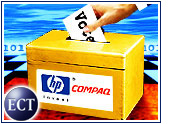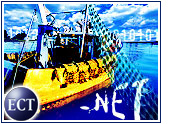
Like any trend-watcher, I tend to pick out and dwellupon defining moments. Earlier this month, asubtle turn of events occurred in the B2B e-commercearena that should have set off flashing red lights.
E-business software giant SAP (NYSE: SAP) opted out of ane-procurement software licensing agreement withbeleaguered partner Commerce One (Nasdaq: CMRC), justdays before Commerce One’s dismal fourth-quarter earnings report.
It is unclear whether SAP’s 20 percent stake inCommerce One will be next on the chopping block. Whatis clear is that the dissolution of the software pact highlights a prevailing B2B trend: “inside-out” e-business.
Today’s companies are looking to shore upe-business systems inside the organization andthen extend them outward to trading partners. Thiswas not the case just a few months ago.
Back in the Day
SAP first linked arms with Commerce One in2000, aiming to benefit from the then-explodingelectronic marketplace arena.
At the time, Commerce One stood atop the promisingrealm of online exchanges, which let multiple buyers save time and money by transacting with multiple sellers.
Marketers lauded the duo as the “dream team for thenew economy.”
As we now know, though, old economyprinciples still rule. And in most industries, thecomplexity of the purchasing process undermined thevalue of price-centric marketplaces.
With the precipitous meltdown of e-marketplaces overthe past year, Commerce One is piecing together anew survival strategy based largely on enterprise procurement software.
Enterprising Vendors
But Commerce One isn’t the only company abandoning e-marketplaces in favor of enterprise-focused applications.
SAP also has its own procurement application,called mySAP Supplier Relationship Management.
With e-marketplace opportunity severely limited,what use does SAP have for Commerce One in theenterprise space?
Not much, as indicated by its decision to disentangle itself from thee-procurement software licensing deal.
SAP at Center Stage
SAP now finds itself enjoying a spotlight that shone almostexclusively on Commerce One and archrival Ariba(Nasdaq: ARBA) during the e-marketplace boom.
After earning its stripes as an ERP vendor, SAP waited in the shadows, making a few friends in the e-marketplace world while still taking care of the complex back-office processes shunned byneophyte online exchanges.
Now, risk-averse companies are increasingly strainingto leverage existing in-house technology investments,rather than bringing in new technology.
Positioned Player
SAP couldn’t have written a better script. With itsback-office background, the company is perfectly positioned tobuild on existing ERP and other business systeminstallations and integrate them within the enterpriseand with external business partners.
Indeed, future e-business gains presumably will stem from early-phase partner collaboration madepossible by integration technologies like WebServices.
Outside-in forces like e-marketplaces, which oftenoverlook business partner integration issues, now arefinding it hard to demonstrate their value.
Role Reversal
I would not be surprised if SAP were to distance itself evenfurther from Commerce One in the coming months.
Even Commerce One’s eleventh-hour return to itse-procurement roots does not increase its value toSAP, given SAP’s own procurement product.
With the market’s renewed focus on enterpriseapplications and their integration with tradingpartners’ systems, Commerce One needs SAP a lotmore than SAP needs Commerce One.
What do you think? Let’s talk about it.
Note: The opinions expressed by our columnists are their own and do not necessarily reflect the views of the E-Commerce Times or its management.


























































This is more a comment to the nature of the action. The history of ecommerce has been that the marketplace model eventually either finds its niche or reaches a critical mass (as in meltdown, not as in profitibality).
The big firms start viewing the costs and determine they can do the same or better. The marketplaces hope this doesn’t happen because the firms have “outsourced” the effort to the marketplace.
However, the firm still owns all the processes that create the data to be passed through the marketplace. The marketplace by its very nature of creating a standardized process and “format” for operating, becomes its own worst enemy.
This is the same as what you comment on–inside out. The advent of better software tools makes this even more compelling for the large firms.
Thus the marketplace ends up relegated to those companies who cannot do it themselves. Just like marketplaces of yore, the landed gentry grew their own and only went to the market for specialty goods or infrequent need (and even then they probably struck a side deal with the merchant). The rest of the populace had to buy their goods in the market and that is what sustained it.
Is there anything going on between SAP and ELCO?
Elcom now has out a Dynamic Trade Centre that they
have Branded from industry2industry which is part
owned by SAP and I think the product was co-developed between i2i and Sap and maybe the product that SAP uses for Dynamic Trading.
What gives here?